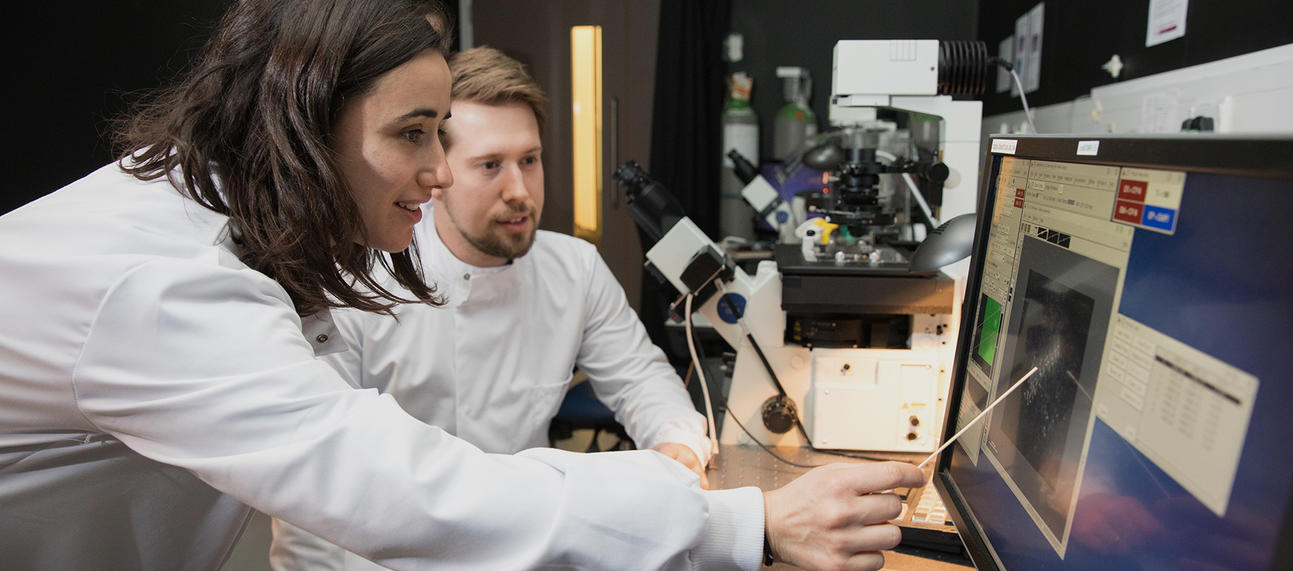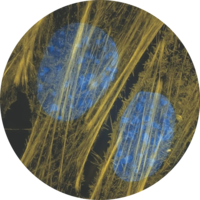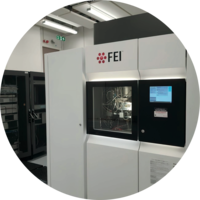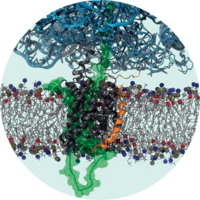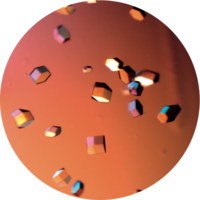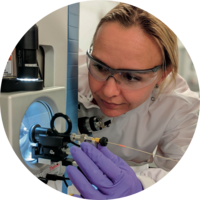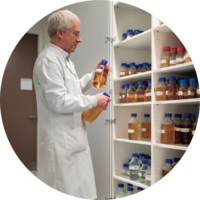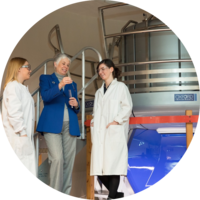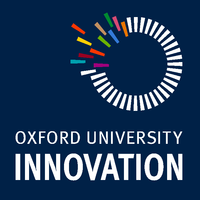Research Facilities Open Day
Small Research Facilities Open Day
About our Small Research Facilities
The seven Small Research Facilities (SRFs) of the Dorothy Crowfoot Hodgkin Building are instrumental in supporting core research needs.
Advanced Proteomics
The Advanced Proteomics Facility provides latest proteomics technologies to support biological research and training. We can accommodate routine protein identification all the way up to generation of temporal profiles of entire proteomes and common post translational modifications.
NMR Spectroscopy
NMR spectroscopy can provide residue-specific information on structure, dynamics and interactions of proteins that is complementary to information from other biophysical methods such as crystallography, cryo-EM, small angle X-ray scattering and calorimetry. NMR can also be used to characterise smaller organic compounds and for metabolomics studies.
Programme
The Micron Imaging Facility offers access to state of the art commercial and custom-built microscopes together with advanced tools for computational analysis. We provide access, support and training in all our of technology including high-content imaging, super-resolution microscopy, single-particle tracking, TIRF microscopy, fluorescent correlation spectroscopy, FRET and FRAP. In my presentation I will highlight our technology available and present case studies of their impact in scientific research. A tour of the facility including short demos of our technology is available including the opportunity to meet the Micron imaging team to discuss support available.
Speakers: Deirdre Kavanagh
Cryo-EM is an essential tool used in Structural Biology. At COSMIC we have a range of instrumentation to help us understand biological processes. The presentation will introduce how the Transmission Electron Microscopes (TEMs) can be used for Single Particle Analysis (SPA) and Tomographic analysis to reveal the molecular structure of biological and chemical machineries. We have several freeze plunging devices which are used in preparing samples for imaging on the microscopes. Additionally, we manage and analyse data from the instrumentation using our dedicated computing cluster at each stage of the structure determination process. A tour will be included to show our instumentation.
Speaker: Rishi Matadeen
The Molecular Biophysics Suite (MBS) in the Department of Biochemistry is a facility equipped with a variety of biophysical equipment that services the needs of researchers for the characterization of proteins and their complexes. Biophysical analysis of proteins is a critical step in the mechanistic dissection of biological systems, which, for example, pre-empts structural analysis of proteins to ensure they are folded and homogeneous, establishes the number of subunits for oligomeric proteins and defines kinetic mechanisms and binding affinities for protein complexes. This typically requires access to complementary instrumentation (the current facility houses 11 instruments, estimated total cost ~£1.5 M) that is impossible to maintain in any individual laboratory.
The original role of the facility was to support the biophysical characterization of proteins for researchers in the science area. The success of the facility has allowed us to expand our remit to include departments throughout the University as well as local biotech companies
The lab manager (Dr David Staunton) ensures appropriate training in equipment use and data analysis, and runs a service facility for particular instruments. For the open day he will briefly describe the applications of the various techniques available in the MBS with examples from research, give a tour of the facility and is happy to discuss any potential experiments or approaches.
Speaker: David Staunton
In the Crystallography Facility we offer a full suite of facilities and support to enable you to study the structure of both soluble and membrane-associated proteins by means of X-ray crystallography. Equipment, facilities and advice are available to help you through the whole process from starting to a protein sample to finishing with interpreting a structural model.
We have two robots to aid in preparing crystallisation trials, a TTP Labtech Mosquito suitable for a wide range of vapour diffusion experiments and an Art Robbins Gryphon specialised for the cubic phase crystallisation of membrane proteins.
To help you follow the progress of your crystallisation trials we have two robotic crystallisation incubators that store experiments at 4 °C or 18 ºC and automatically take pictures using both visible and UV light that you can inspect from your own computer using a web browser. We also have a selection of bench top microscopes that you can use both to harvest crystal once they have grown.
We also organise time at large scale synchrotron facilities such as Diamond and the ESRF and provide assistance in using them to obtain X-ray diffraction from your crystals. Once this has been achieved we also provide computing assistance to help you analyse your data and solve your structure.
Speaker: Ed Lowe
The Advanced Proteomics Facility provides latest mass spectrometry-based proteomics technologies to support biological research and training. We can accommodate routine protein identification all the way up to generation of temporal profiles of entire proteomes and common post translational modifications. We cover all aspects of a proteomics analysis, from experimental design to sample preparation, mass spectrometry analysis and bioinformatics analysis. During my presentation, I will introduce you to proteomics and our applications using nano-liquid chromatography coupled with tandem mass spectrometry (LC-MS/MS). Finally, a tour of our facility and instrumentations will be given including time to discuss potential projects.
Speaker: Marjorie Fournier
Our NMR facility houses solution-state spectrometers operating at 500, 600, 750 and 950 MHz. This presentation will outline the types of NMR experiments that can be collected, what help is available to users, and how we can assist with answering both academic and industrial research questions. A tour of the NMR facility, including our impressive 22.3 Tesla magnet will be included.
Speaker: Christina Redfield
Tony Knight will talk briefly about the ‘MGSL’ Media, Glassware and Sterilization Laboratories. This facility sits with in the Dorothy Crowfoot Hodgkin Building and provides basic technical support to the research science projects, including sterilization facilities, glass wash and microbiological media and solution preparation. His talk will cover the basic logistics of running a ‘one size fits all service’ and areas where we can accommodate new techniques and processes. Attending the talk will provide insight into how these services can be integrated into the workflow of your laboratory.
Speaker: Dr. Tony Knight
Lunch will be provided
A single tour of all of the facilities (if the numbers are large, this can be broken in 2/3 groups each with a different starting point).


